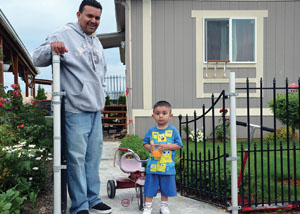By Virginie Arnaud LePape, Senior Director, Lending
In 1982, Capital Impact was created with a single focus – support the development of cooperatives in underserved communities.

Charter schools create opportunities for innovation that drive academic success for students in underserved communities.
Along the way, we gradually expanded our scope to meet the growing needs of the communities we served by working to increase access to health care, education, housing, and healthy food.
A handful of loans slowly grew into a truly diversified portfolio of offerings as we took the risk to partner with those organizations that traditional financial institutions shied away from. Twenty-five years after we began lending in 1984, we hit an incredible milestone of deploying $1 billion into low- and medium-income communities across the country.
I am humbled that just eight years after that initial milestone, we more than doubled that achievement by deploying more than $2.5 billion through the end of our record-breaking efforts in 2017.
It is a true testament to our mission-driven team for living our mission statement by delivering both the capital AND commitment that enables those most in need to build communities of opportunity that break barriers to success.
While we pause to celebrate, we also know that we must increase our resolve. Too many of us continue to struggle, with a disproportionate impact on people of color.
To help solve the key social and racial justice issues facing our society, we must continue to make inroads in achieving our strategic pillars to address systemic poverty, create equity, build healthy communities, and promote inclusive growth.
This requires supporting our lending work by deploying new and innovative programs backed by cutting-edge research; making the case for support from lawmakers at the federal, state, and local levels; amplifying our impact investing efforts with both individuals and large institutions; and forming partnerships that ensure that our solutions are grounded in what communities both need and can act on.
We did not get to this point alone, and for that I want to thank all of those who have supported us, as well as those organizations who are working directly with often-neglected communities every day to deliver the services they need to thrive.
By working together, I know that we can empower communities to achieve transformative progress in 2018 and beyond.
[dcwsb inline=”true”]








